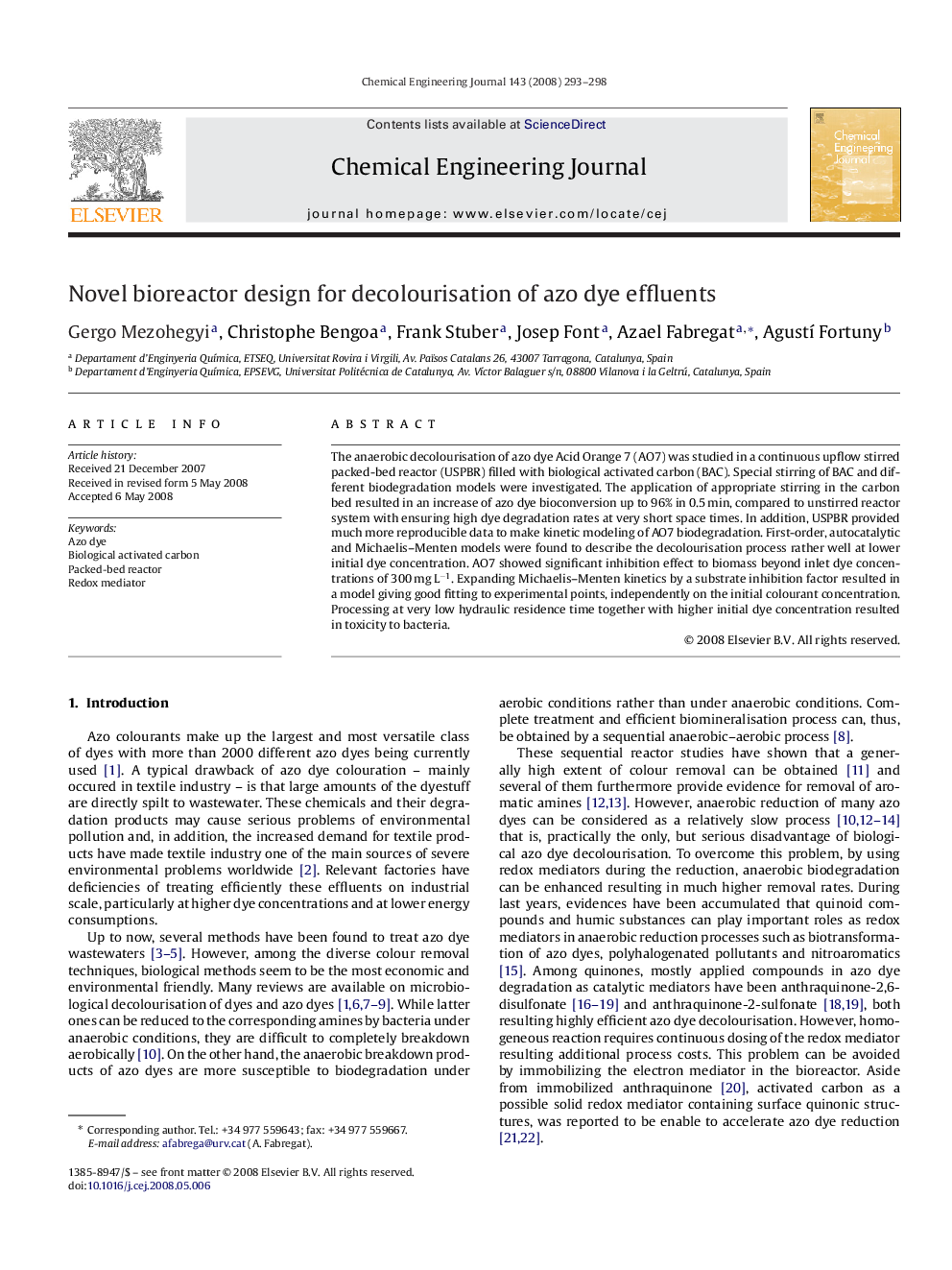| Article ID | Journal | Published Year | Pages | File Type |
|---|---|---|---|---|
| 152934 | Chemical Engineering Journal | 2008 | 6 Pages |
The anaerobic decolourisation of azo dye Acid Orange 7 (AO7) was studied in a continuous upflow stirred packed-bed reactor (USPBR) filled with biological activated carbon (BAC). Special stirring of BAC and different biodegradation models were investigated. The application of appropriate stirring in the carbon bed resulted in an increase of azo dye bioconversion up to 96% in 0.5 min, compared to unstirred reactor system with ensuring high dye degradation rates at very short space times. In addition, USPBR provided much more reproducible data to make kinetic modeling of AO7 biodegradation. First-order, autocatalytic and Michaelis–Menten models were found to describe the decolourisation process rather well at lower initial dye concentration. AO7 showed significant inhibition effect to biomass beyond inlet dye concentrations of 300 mg L−1. Expanding Michaelis–Menten kinetics by a substrate inhibition factor resulted in a model giving good fitting to experimental points, independently on the initial colourant concentration. Processing at very low hydraulic residence time together with higher initial dye concentration resulted in toxicity to bacteria.
